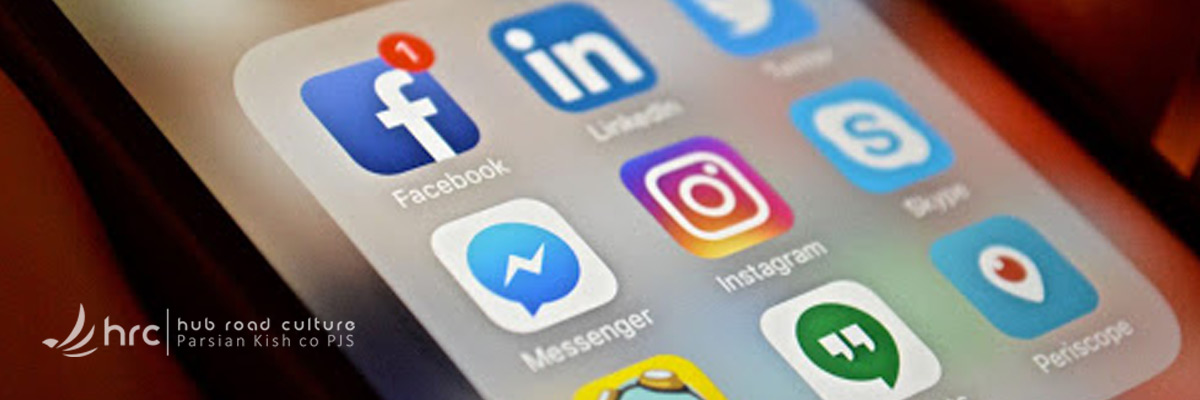Internet Roles Over Daily Lives
The Internet has turned our existence upside down. It has revolutionized communications, to the extent that it is now our preferred medium of everyday communication. In almost everything we do; we use the Internet. Ordering a pizza, buying a television, sharing a moment with a friend, sending a picture over instant messaging. Before the Internet, if you wanted to keep up with the news, you had to walk down to the newsstand when it opened in the morning and buy a local edition reporting what had happened the previous day. But today a click or two is enough to read your local paper and any news source from anywhere in the world, updated up to the minute.

Iran Internet Accessibility
In Iran, internet cafes are known as cafenets, though there are now fewer such places as everyone has mobile internet and wi-fi increasingly common. In fact, right now, especially at Tehran, almost there are virtually no such cafenets left anymore, as nowadays wi-fi speeds are available. Though due to widespread existence of viruses, worms, trojans and key-loggers the users should be always wary of sticking their USB into any local machines.
Iran Internet Transformation
In the 1980s and 1990s, the Internet widened in scope to encompass the IT capabilities of universities and research centers, and, later on, public entities, institutions, and private enterprises from around the world. The Internet underwent immense growth; it was now the largest computer network in the world, comprising over 50,000 sub-networks, 4 million systems, and 70 million users.
Iran Internet, too, was no longer concerned with information exchange alone: it was a sophisticated multidisciplinary tool enabling individuals to create content, communicate with one another, and even escape reality. Today, we can send data from one end of the world to the other in a matter of seconds, make online presentations, live in parallel “game worlds,” and use pictures, video, sound, and text to share our real lives, our genuine identity. Personal stories go public; local issues become global. The rise of the Internet has sparked a debate about how online communication affects whole body of social relationships.

Iran Internet usages
In the first few years of the 21st century, Iran Internet experienced a great surge in its usages. As of 2018, Iran has an estimate Internet penetration rate of between 64% to 69% out of a population of about 82 million. The business of selling virtual private networks (VPNs), SOCKS, and proxy servers in Iran is worth millions of U.S. dollars due to the large demand. According to the twelfth minister of Iran Communication State the lucrative business of selling VPNs and proxies has had huge profits for its manufacturers and retailers. At the beginning of March 2012, in response to Western actions to exploit its Internet connectivity, such as the Stuxnet cyberattack, fueling suspicions of foreign technologies, Iran began implementing an internal intranet, to satisfy its citizens demands.
Internet Services
When first introduced, the Internet services provided by the government within Iran were comparatively open. Many users saw the Internet as an easy way to get around Iran’s press laws.In preparation for the March 2012 elections and preparing to launch a national Internet, the Iran government instituted strict rules on cybercafes. It also requires all Iranians to register their web sites with the Ministry of art and culture.
At the beginning of March 2012, following the order of Iran’s Supreme Leader to Iranian authorities, from then on, their task would be to define policy and co-ordinate decisions regarding the Internet; which is thought to be in need for the country’s authorities strongest attempt.
Iran Internet Software
Iran has since developed its own hardware and software for related purposes. The architecture of the Iranian Internet is particularly conducive to widespread surveillance as all traffic from the dozens of ISPs serving households is routed through the telecommunications infrastructure of the Telecommunication Company of Iran (TCI).

Lawful Interception
The possibility that Nokia Siemens Systems sold, in 2008, TCI a deep packet inspection countrywide capacity for monitoring only lawful intercept capacity relative to child pornography e.g.
Andrew Lighten, a NSN employee, however, states[41] that the company does not have products for Deep Packet Inspection, and only provided Iran lawful interception capability for 3G UMTS mobile networks, which he states, is a fundamental requirement of the UMTS network as defined by the ETSI standards.
Iran Internet Connection Speed Restrictions
As of 2010, most major ISPs in Tehran offer 1 Mbit/s for 2,190,000 rials/month (around 60 dollars/month), 2Mbit/s for 3,950,000 rials/month (around 115 dollars/month) for unlimited data traffic. 1 Mbit/s with 2 GB traffic limitation costs 189,000 rials/month (around 9 dollars/month). Note these prices are just for Tehran. Prices are usually higher in other cities. Restriction for the residential client speed of 128kbit/s is still in place and the speeds mentioned above are just for offices and commercial firms.
However, the situation got better in the years afterward, and as of Oct. 2019 a major ISP provided 40Mbit/s Internet with 100GB of data per month, only for 850,000 IRR (about 8 USD). Others provide unlimited data traffic plans with up to 16Mb/s speed, just for 260,000 IRR/month (about 2.25 USD)

Sanctions’ impacts on Iran Internet
American technology companies block their services inside Iran in efforts to over comply with United States sanctions which outlaw financial transactions with Iran. In August 2019, access to free services on GitHub, Gitlab, as well as Amazon Cloud services were suspended for users inside Iran. The Amazon Cloud suspension has had particularly severe collateral impacts, as Amazon Cloud hosts the majority of circumvention tools needed for bypassing the filters restricting access to online content. This development has forced developers working inside Iran to use unsafe hosting tools, leaving their websites vulnerable to cyberattack and risking users’ security. In December 2018, the platform Slack temporarily suspended access to its services for all users who had ever connected to the platform from Iranian IP addresses. Slack reinstated those accounts under public pressure, while continuing to suspend its services to users connecting directly from Iran.
Since March 2018, Apple has made the App Store unavailable in Iran Internet, with significant impacts on the ability of people in the country to communicate online. Users inside Iran using Apple devices were unable to access the App Store through their usual proxies, and were unable to download new VPNs or communication apps.The suspension of communications services and platforms inside Iran continue despite the existence of a General License D-1—first issued by the Office of Foreign Asset Controls (OFAC) in 2014—which authorizes private companies to provide certain “personal communications” technologies to Iran Internet users. When sanctions were reimposed by the United States, the US Treasury Department highlighted that General License D-1 would apply, in the interests of “fostering Internet freedom and supporting the Iranian people.”

